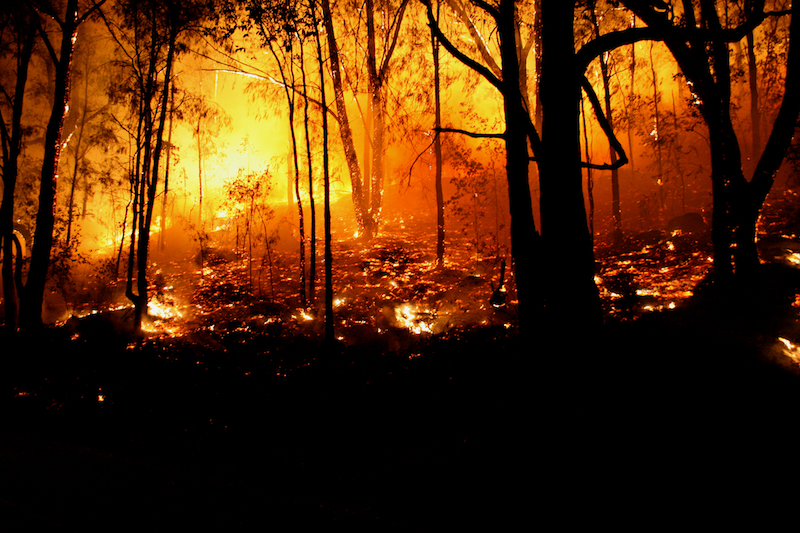Demystifying BAL Reports: A Guide to Understanding Your Property's Bushfire Threat
Demystifying BAL Reports: A Guide to Understanding Your Property's Bushfire Threat
Blog Article
Ensuring Bush Fire Security Through Proper BAL Report Evaluation
In the realm of bush fire protection, the careful analysis of Bushfire Assault Level (BAL) records stands as a cornerstone for guarding residential properties against the destructive influence of wildfires. With environmental aspects and property qualities playing substantial functions in identifying the level of threat, a thorough understanding of BAL ratings becomes critical.
Comprehending Bushfire Strike Level (BAL)
In the world of bushfire security, understanding the Bushfire Attack Level (BAL) is paramount for ensuring effective mitigation approaches. BAL is a system used to determine the potential danger a structure might encounter from a bushfire. It thinks about variables such as the kind of plants, the slope of the land, the Fire Threat Index, and the Fire Intensity Index. Comprehending the BAL score of a building is essential for property home builders, policymakers, and proprietors to implement suitable measures to protect against bushfire threats.

Relevance of BAL Record Evaluation
An essential element in bushfire security preparation entails the comprehensive evaluation of BAL records to evaluate the prospective threats and figure out ideal reduction approaches. BAL reports supply important information regarding the possible impact of bushfires on a residential property based upon different factors such as plant life kind, range to possible fire risks, and incline of the land. Evaluating these records with accuracy is vital in creating effective bushfire security measures tailored to the particular danger profile of a building.
Implementing Fire Protection Procedures
Carrying out efficient fire defense procedures is crucial for safeguarding properties in bushfire-prone areas. This involves clearing flammable plants, such as completely dry fallen leaves and branches, within a specific distance of the building.
Additionally, having a sufficient and properly maintained supply of water, such as a tank or swimming pool, can aid firefighters in their efforts to protect the home. It is very important to have a clear emptying plan in place and to guarantee that all residents know with the treatments. In addition, having firefighting tools readily available, such as pipes and fire extinguishers, can assist in dealing with little area fires before they rise. On the whole, implementing a combination of these fire security actions can significantly enhance the possibilities of safeguarding residential or commercial properties throughout bushfire occasions.
Mitigating Threats in Fire-Prone Areas
To strengthen residential properties against bushfire dangers, a calculated emphasis on mitigating risks in fire-prone areas is necessary. One important element of danger mitigation is maintaining defensible area around homes by removing flammable plant life, ensuring appropriate spacing between trees and frameworks, and using fire-resistant landscape design techniques.
In addition, creating or retrofitting structures with fire-resistant materials and ensuring appropriate upkeep of roof coverings, rain gutters, and exterior cladding can dramatically enhance the home's durability to bushfires. Practicing a bushfire and creating emergency plan with all passengers, including discharge treatments and interaction methods, is likewise crucial in mitigating dangers effectively. By embracing a positive method to risk mitigation in fire-prone locations, home proprietors can better safeguard their properties and improve general bushfire preparedness.
Ensuring Property Safety And Security and Resilience
Making certain the safety and security and resilience of homes in fire-prone areas calls for an unwavering commitment to robust precautionary actions and calculated preparation. Property safety and security begins with carrying out efficient procedures to decrease fire risks. This consists of maintaining a defensible room around Go Here the home by getting rid of combustible plants, ensuring appropriate maintenance of roofings and seamless gutters, and using fireproof structure products. Regular upkeep of firefighting equipment, such as hoses and sprinkler systems, is click to read more additionally critical to building resilience.
Strength, on the other hand, entails the ability of a property to recover and hold up against from a bushfire. This can be improved via the installment of cinder guards on vents and windows, ensuring that entry points for cinders are minimized. Furthermore, having a well-balanced discharge plan and exercising it routinely can considerably boost residential or commercial property resilience. Working together with neighbors and neighborhood fire authorities can also reinforce the safety and security and strength of properties in fire-prone locations. By proactively dealing with these facets, homeowner can much better protect their properties and liked ones from the danger of bushfires.
Verdict
In conclusion, ensuring bushfire protection through correct BAL report evaluation is essential for recognizing the level of webpage risk positioned by bushfires and carrying out necessary fire defense steps. By reducing risks in fire-prone locations and making certain residential or commercial property security and durability, people and neighborhoods can much better get ready for and reply to bushfire occasions. It is vital to focus on fire precaution to protect lives and home in these high-risk settings.
In the realm of bush fire protection, the thorough analysis of Bushfire Assault Level (BAL) records stands as a cornerstone for securing properties against the devastating impact of wildfires (BAL Report). Comprehending the BAL ranking of a residential property is critical for home policymakers, builders, and owners to apply proper steps to safeguard against bushfire threats

BAL records supply vital information about the potential influence of bushfires on a residential property based on different variables such as plant life type, distance to potential fire hazards, and incline of the land (BAL Report). Generally, applying a mix of these fire defense procedures can substantially boost the opportunities of protecting homes during bushfire occasions
Report this page